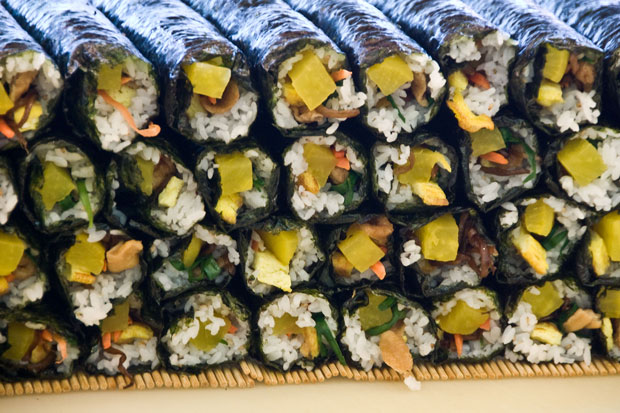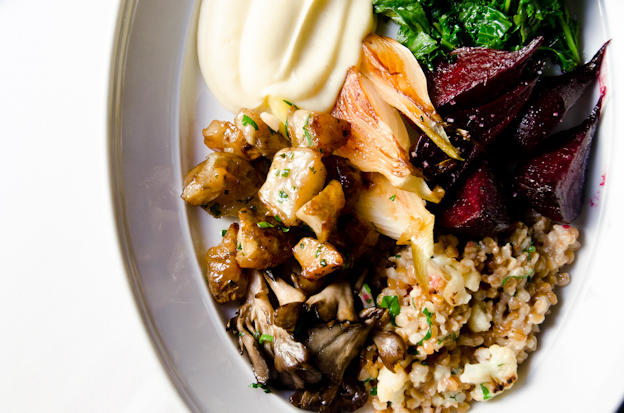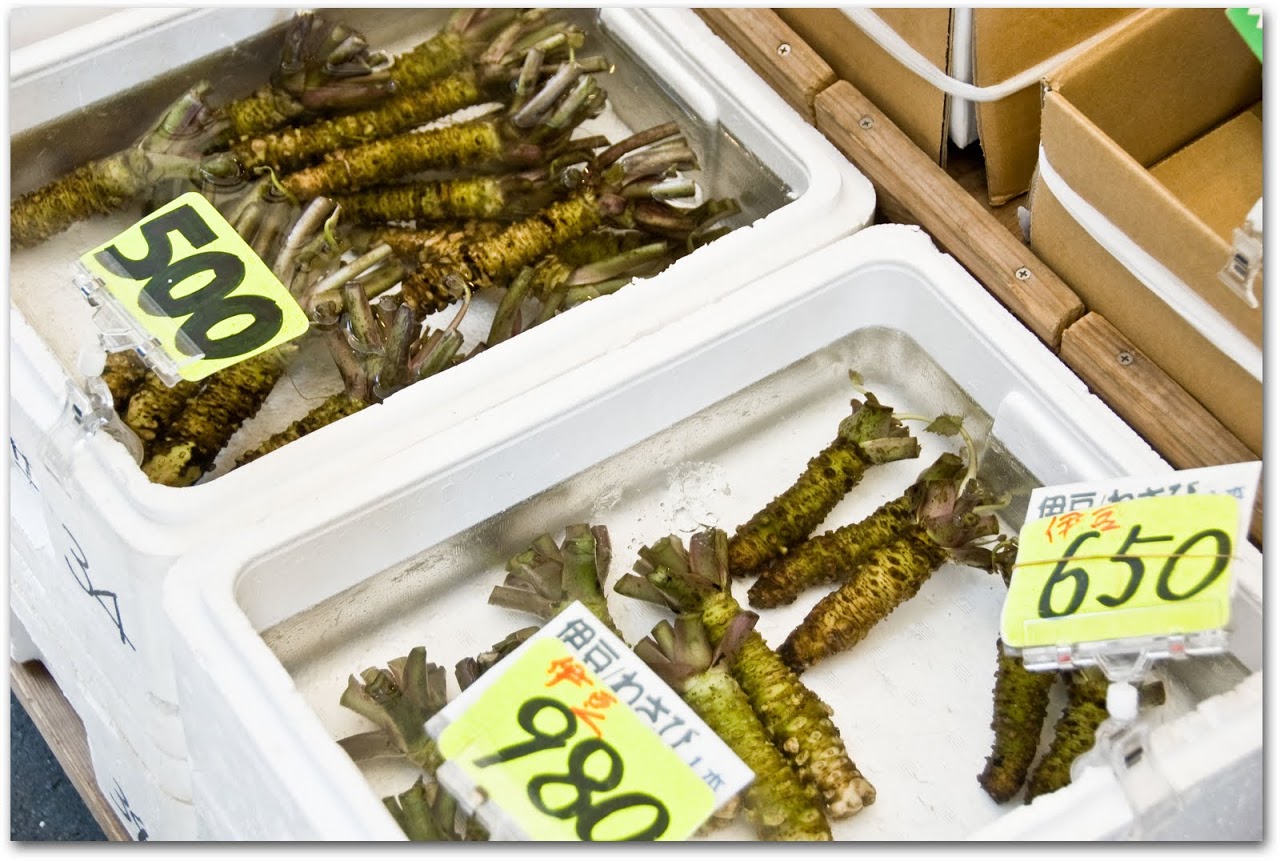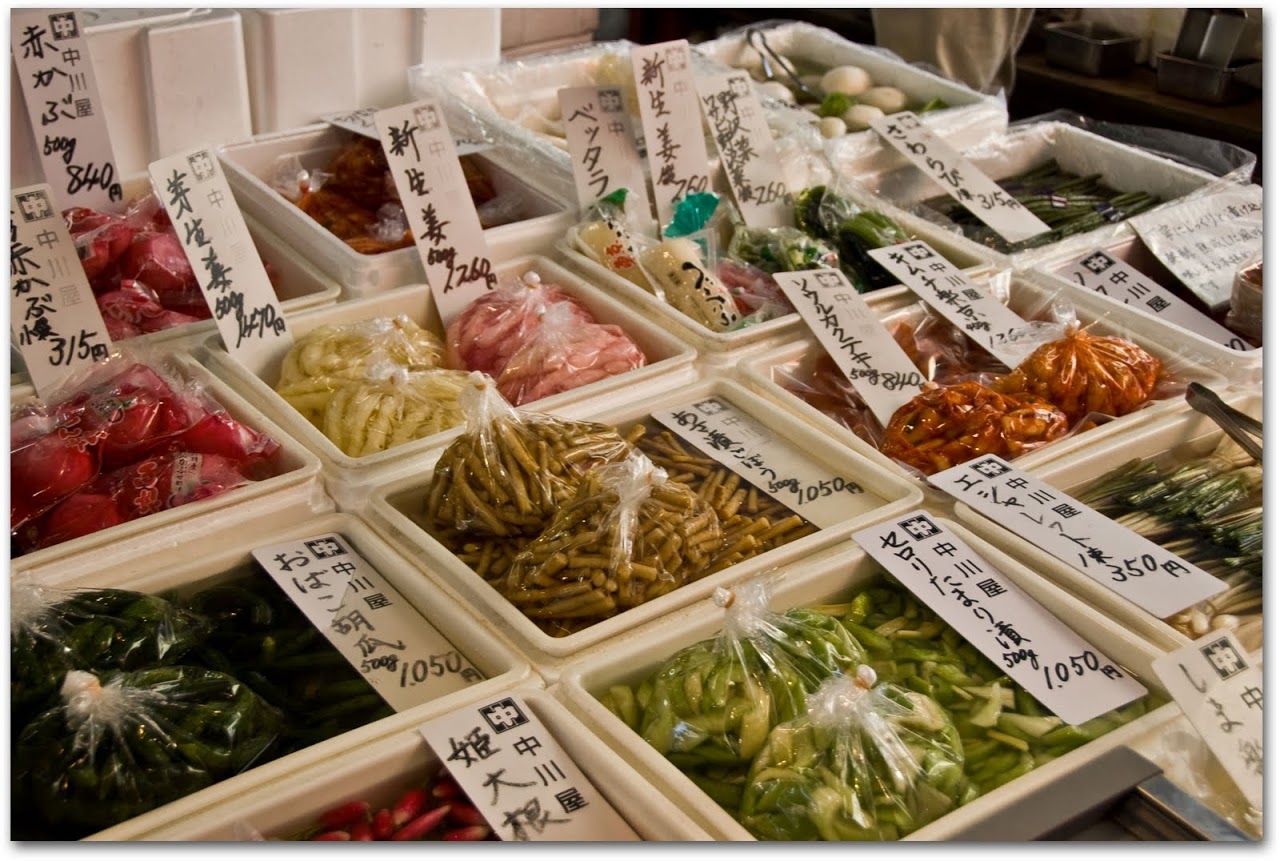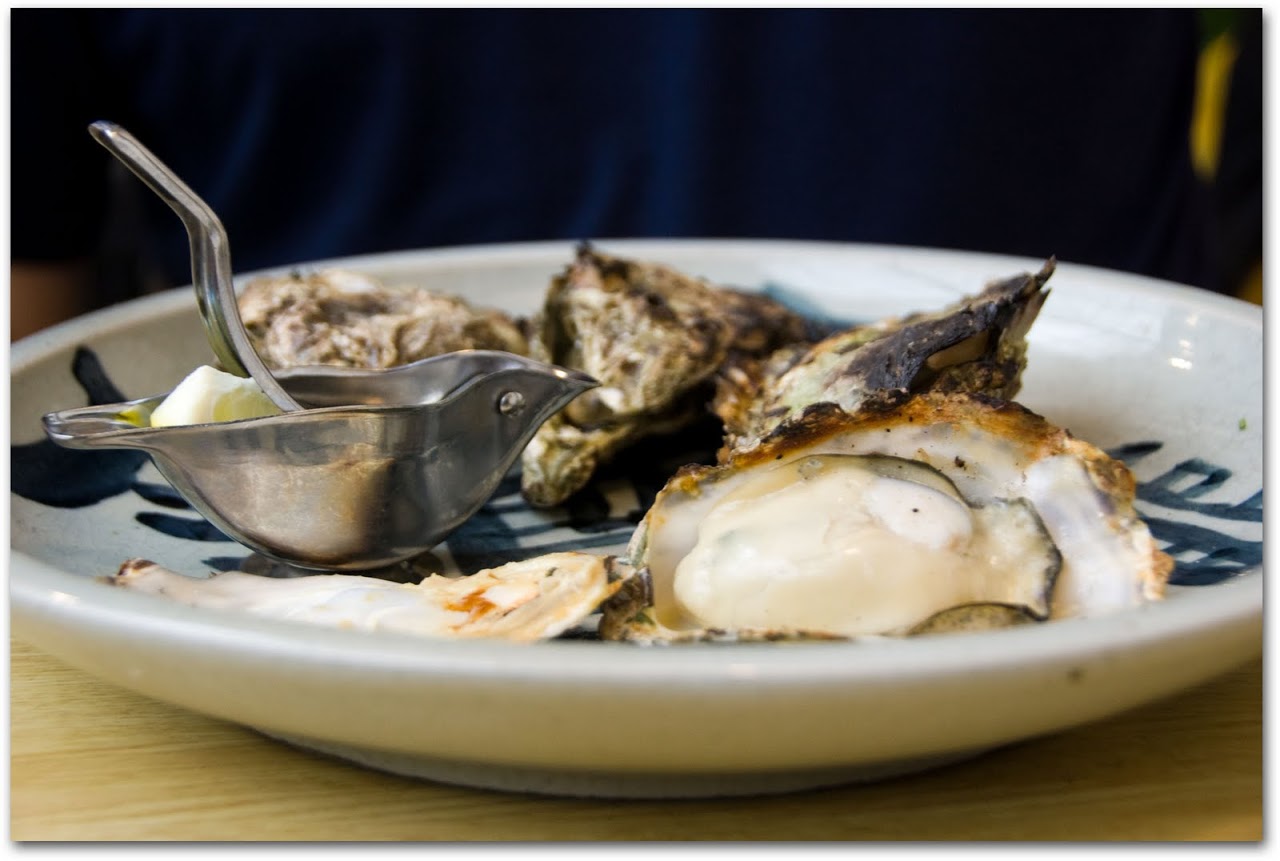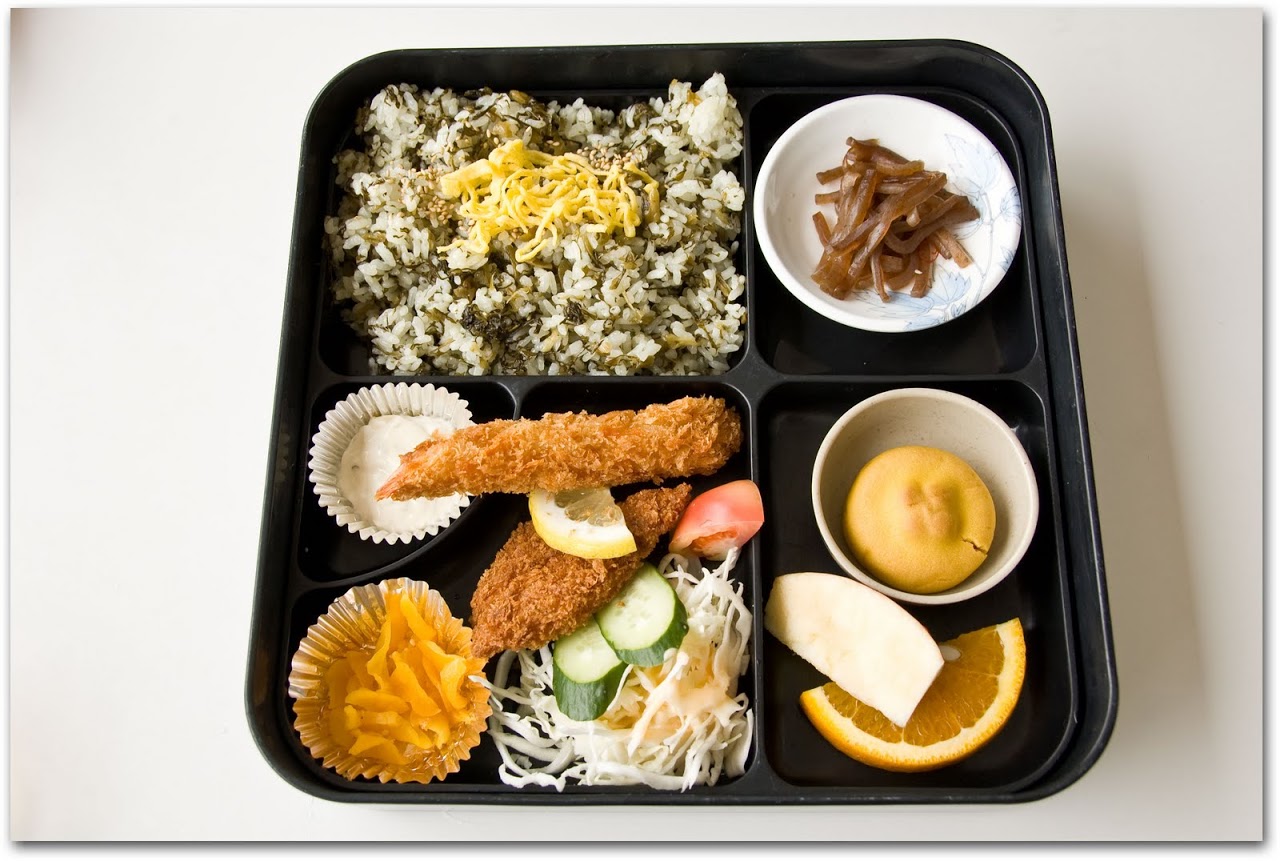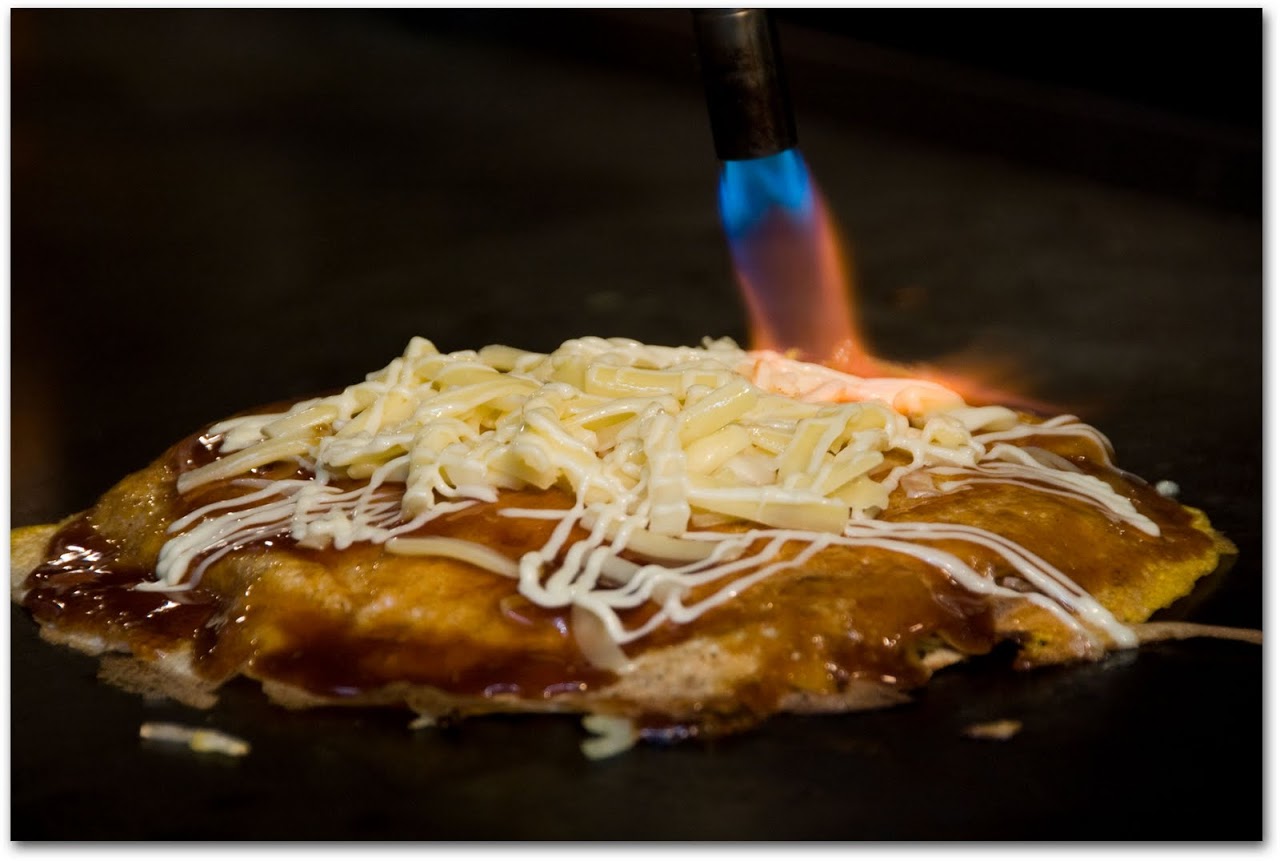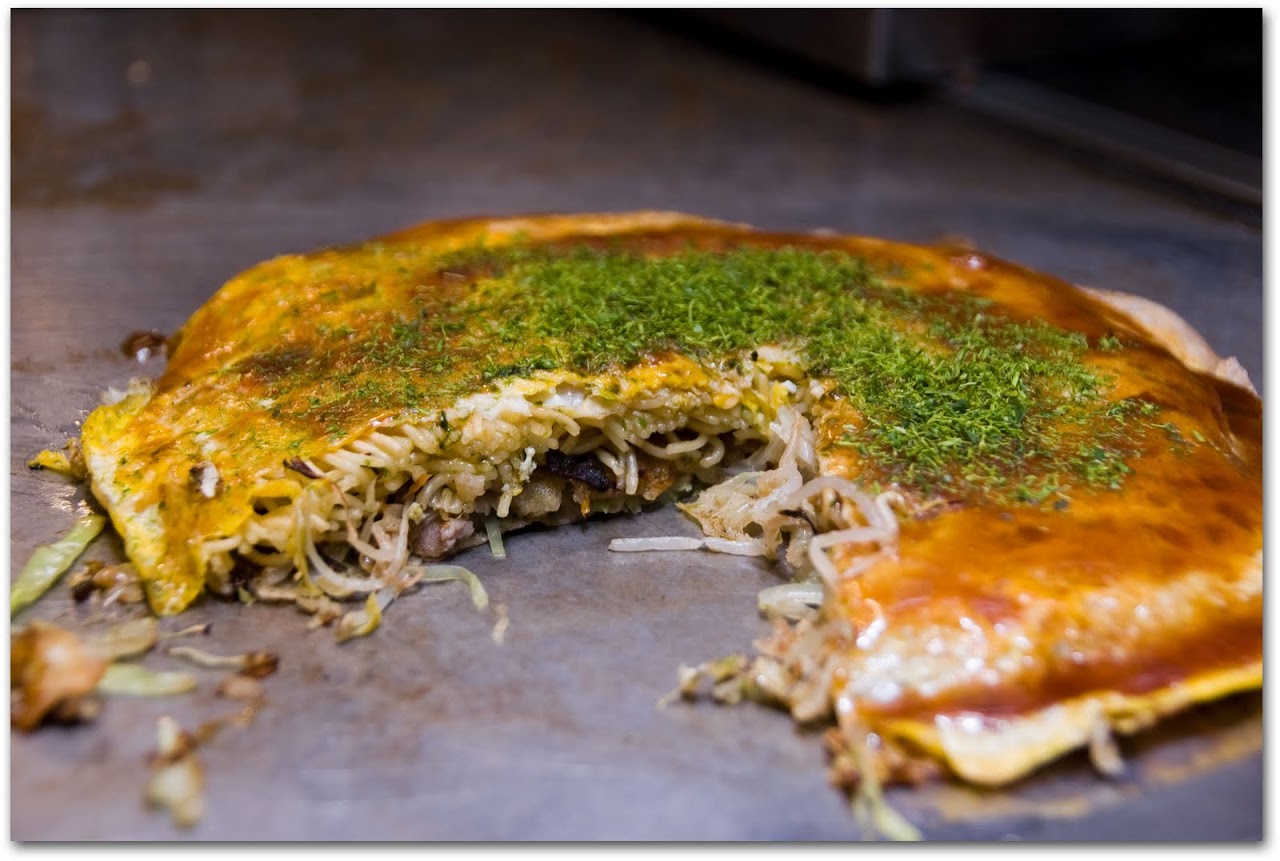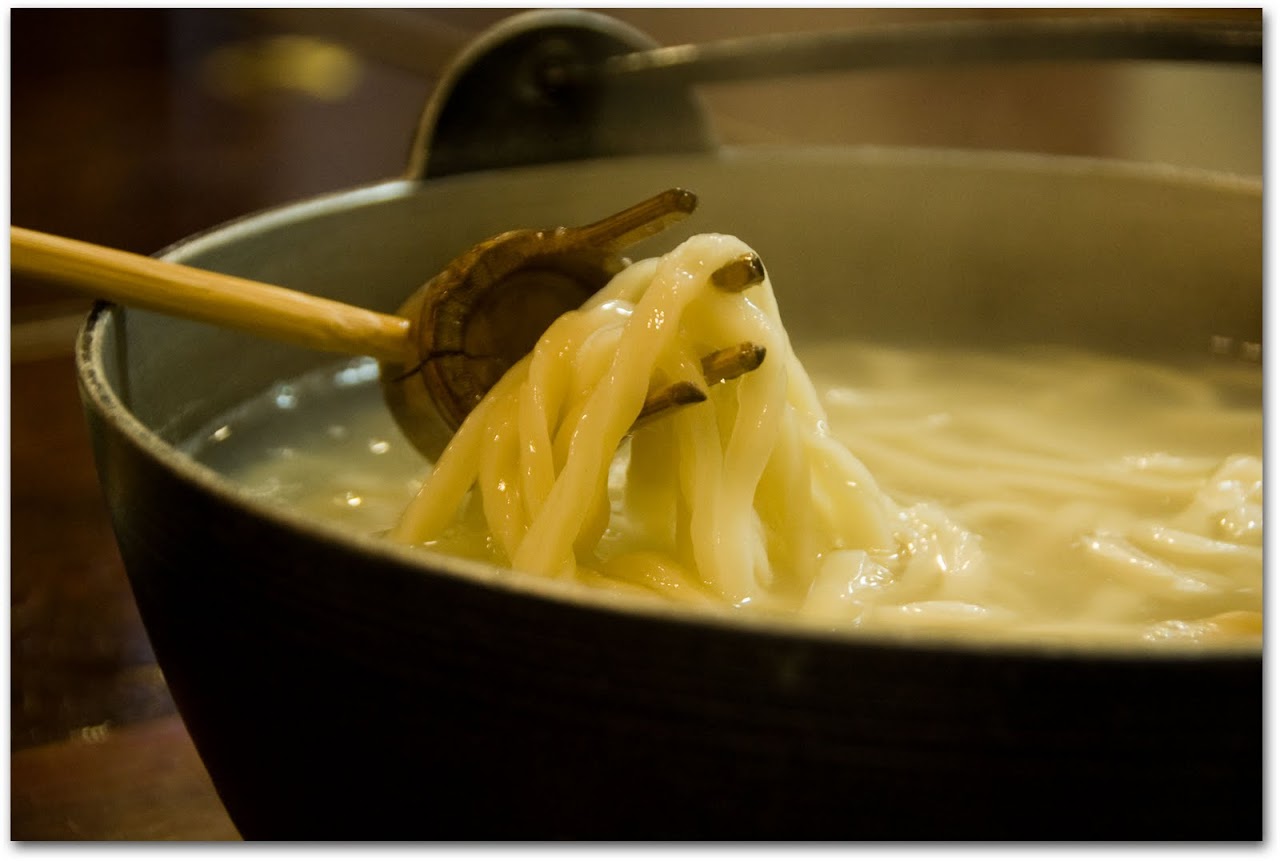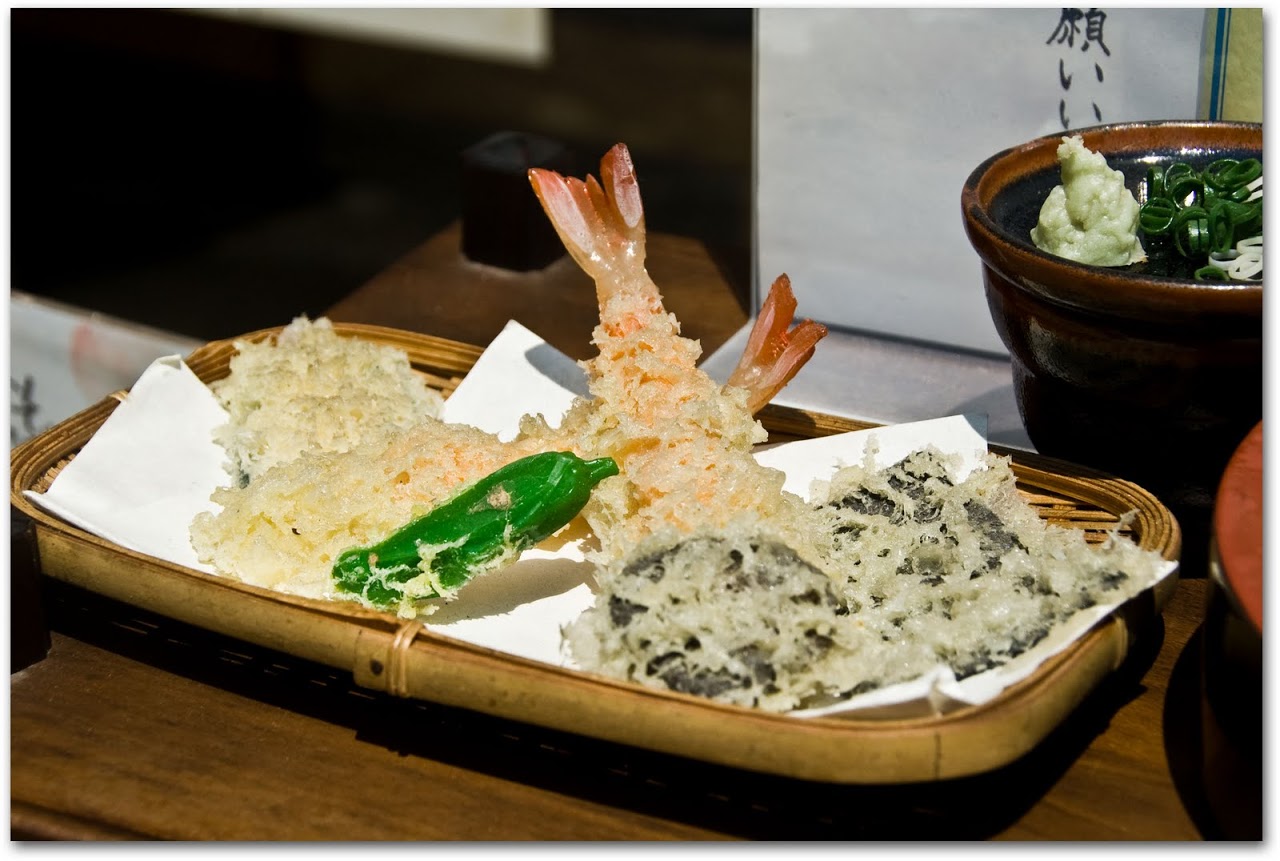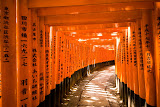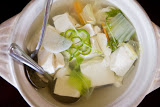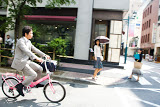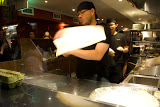Wasabi
One of the many things I love about the United States is that we can get good ---- and, occasionally, excellent ---- international fare in our cities. I have had Thai curries in Atlanta that rivaled the ones we ate in Thailand and risottos as creamy and rich as the ones I've eaten in Italy . When we've traveled, food has never been an outright surprise because we had glimpses of that cuisine in our home country.
Japanese cuisine has been a different story. We thought we knew Japanese cuisine: sushi, hibachi, tempura, rice, and fish. When we first tasted fresh wasabi and not the pre-packaged stuff we were used to eating, we realized that we had no idea of the diversity of the food in this country and how little of it is imported to the United States. This is the second part in our Japan on a budget series.
Tsukemono
Tsukemono : Though not a stand-alone meal like the rest of these listed, tsukemono are served at every single meal we have had in Japan. Tsukemono are pickled vegetables, usually served with rice. We have eaten every type of pickled vegetable imagineable, from eggplant to okra to squash to pumpkin, and they are sold in beautiful packaging in grocery stores, convenience stores, and specialty stores across Japan. Each region specializes in a particular types of pickled vegetables. A plate of rice with pickled vegetables costs about 300 Yen ($3 USD).
Grilled oysters in Miyajima
Grilled oysters : Hiroshima and Miyajima specialize in grilled oysters. The oysters, larger than the size of my fist, are simply cleaned and grilled on street corners and then served with a wedge of lemon for about 400 Yen ($4 USD) for two oysters. Izakaya, pubs that serve small plates of food, may serve grilled oysters or other seafood for low prices.
Bento box
Bento Boxes : Businessman typically take bento boxes to lunch or on the train. These rectangular boxes are sold in every train station and department store in the country and usually contain a selection of meat, vegetables, rice, and sweet in separate compartments. Bento boxes are one of the cheapest ways to eat in Japan so if you feel your wallet starting to strangle you, head for the department stores and eat to your fill for less than 800 Yen ($9 USD).
Okonomiyaki
Okonomiyaki: Okonomiyaki is unlike anything else we have ever eaten. The name is derived from okonomi which means "what you like" because the diner dictates the items to go into the dish and the cook makes the dish at teppan/hibachi-style grills. It is often misleadingly described as a Japanese pancake but it is more like a crepe-meets-omelet-meets-salad-meets-hibachi. The two major styles of okonomiyaki are Hiroshima style and Kansai/Osaka style.
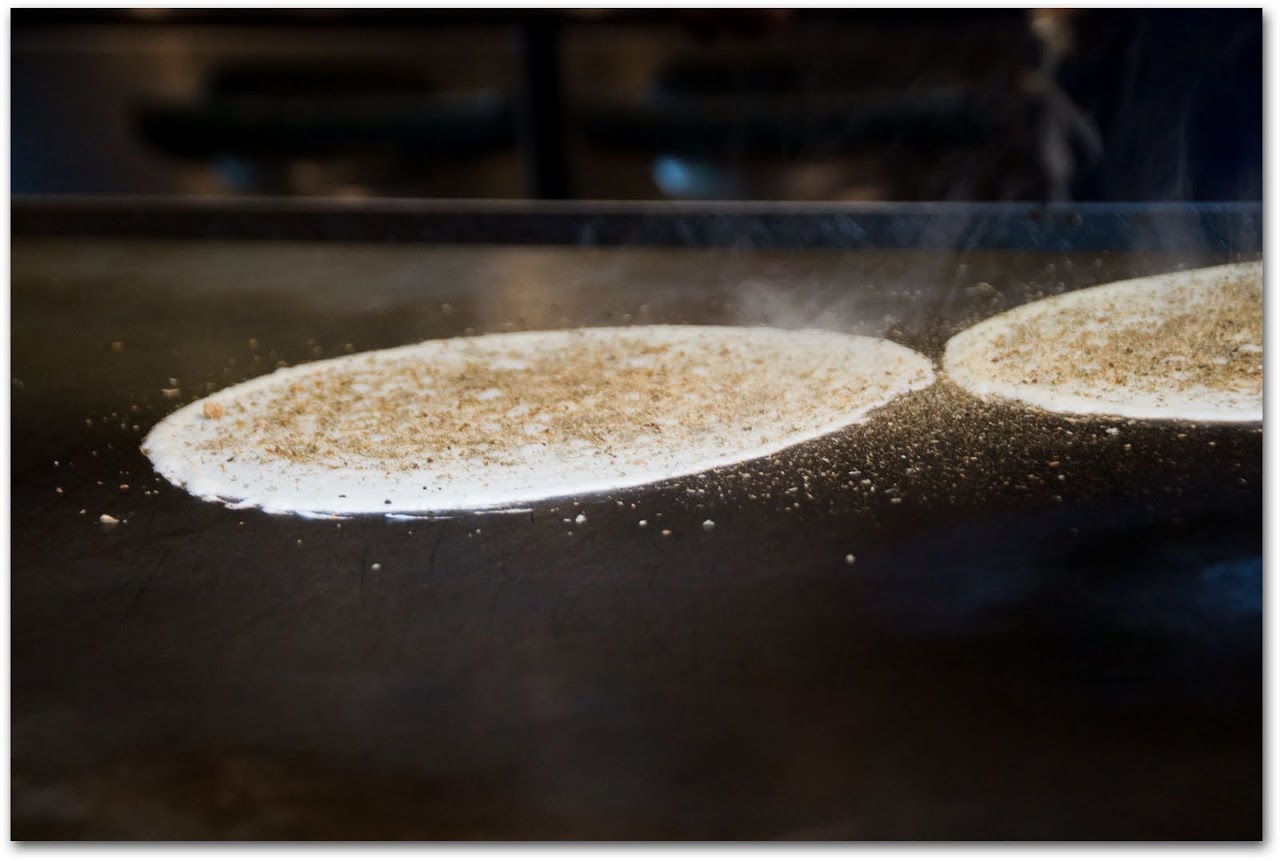
|
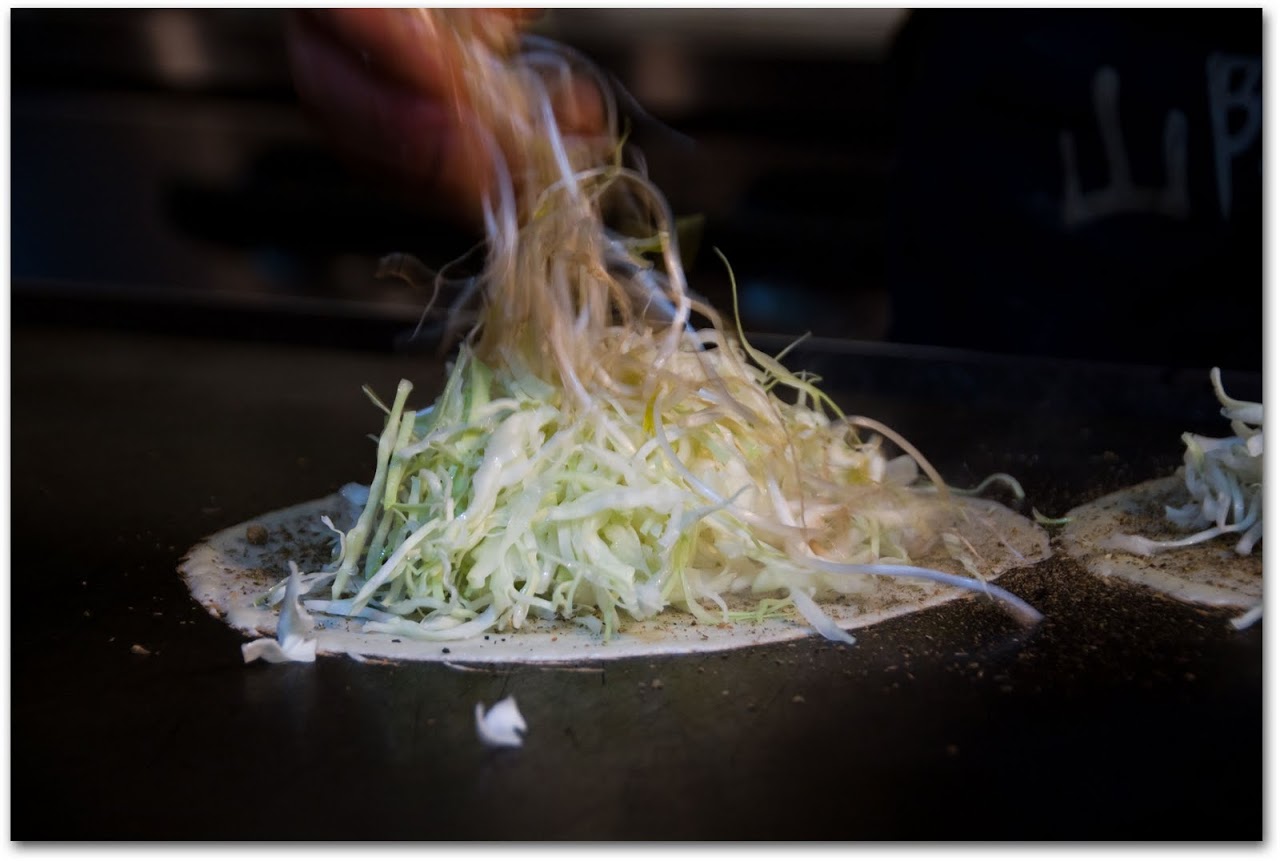
|
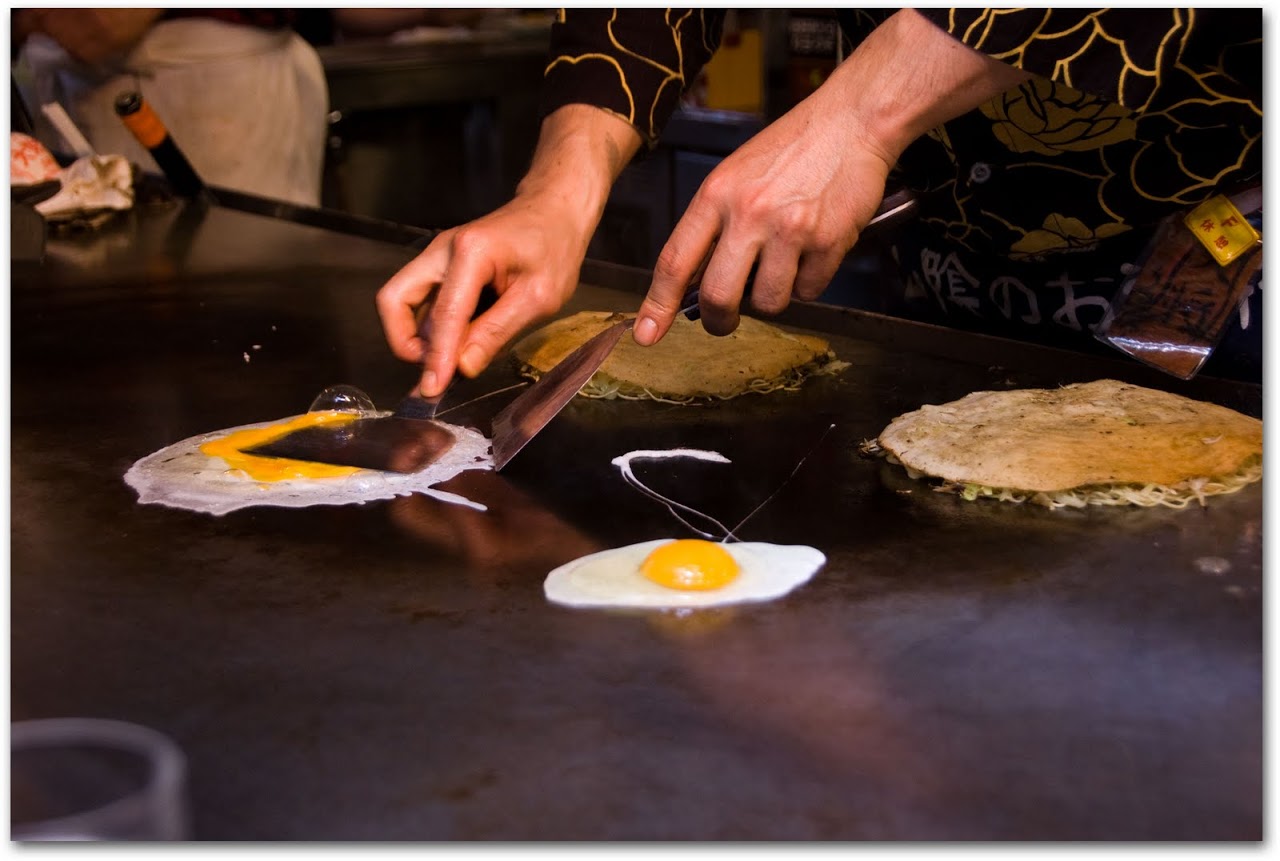
|
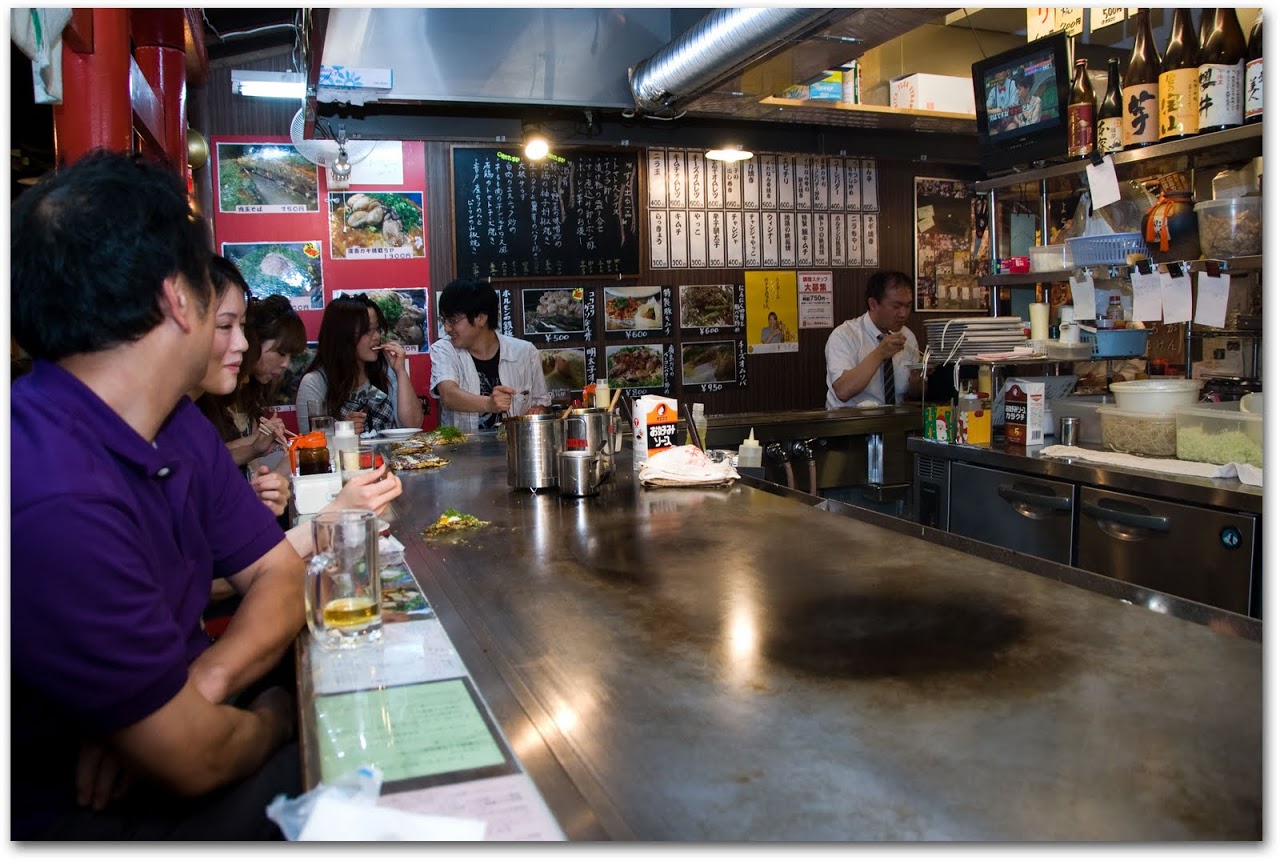
|
In the Hiroshima style, the cook begins by making a crepe with a thin batter and then layers the crepe with cabbage and bean sprouts. Meanwhile, cooked noodles are placed on the teppan until they turn brown. The noodles are layered on top of the crepe and then the cook adds meat (traditionally, pork, but you may request oysters, squid, and other seafood). The cook makes a thin omelet and places the omelet at the bottom of the crepe stack and adds cheese (if requested), green onions, mayonnaise, bonito flakes, seaweed flakes, and a sauce that is a thicker, sweeter version of barbeque sauce. We were surprised by the deliciousness of the combination of flavors and went back for more on our second night in Hiroshima.
Inside of okonomiyaki, Hiroshima style
The Osaka style is a simpler version, made by combining all of the ingredients together and cooking them on a teppan grill. At some restaurants in Japan, small individual-sized teppan grills are placed on tables and we made our own okonomiyaki. If you are in Japan, search out okonomiyaki. For under 1200 yen ($13 USD) per person, we had a delicious and unique meal.
Udon noodles in Nagano
Soba/udon: In cities like Nagano, Nikko, and Aso, that are hours away from the ocean and high in the mountains, soba and udon are staples. Soba is a thin buckwheat noodle, that may be served cold on a zaru (bamboo mat) to be dipped in a sauce made from soy, dashi, and mirin (rice vinegar) with wasabi and green onions, or warm in a soup topped with vegetables. Udon, on the other hand, is a thick wheat based noodle that forms the basis of a hot noodle soup. In Nagano, the udon was made with the inner kernel of the buckwheat plant. At most soba/udon shops, it is possible to walk away feeling full and satisfied for about 1000 to 1200 Yen ($11 to $13 USD).
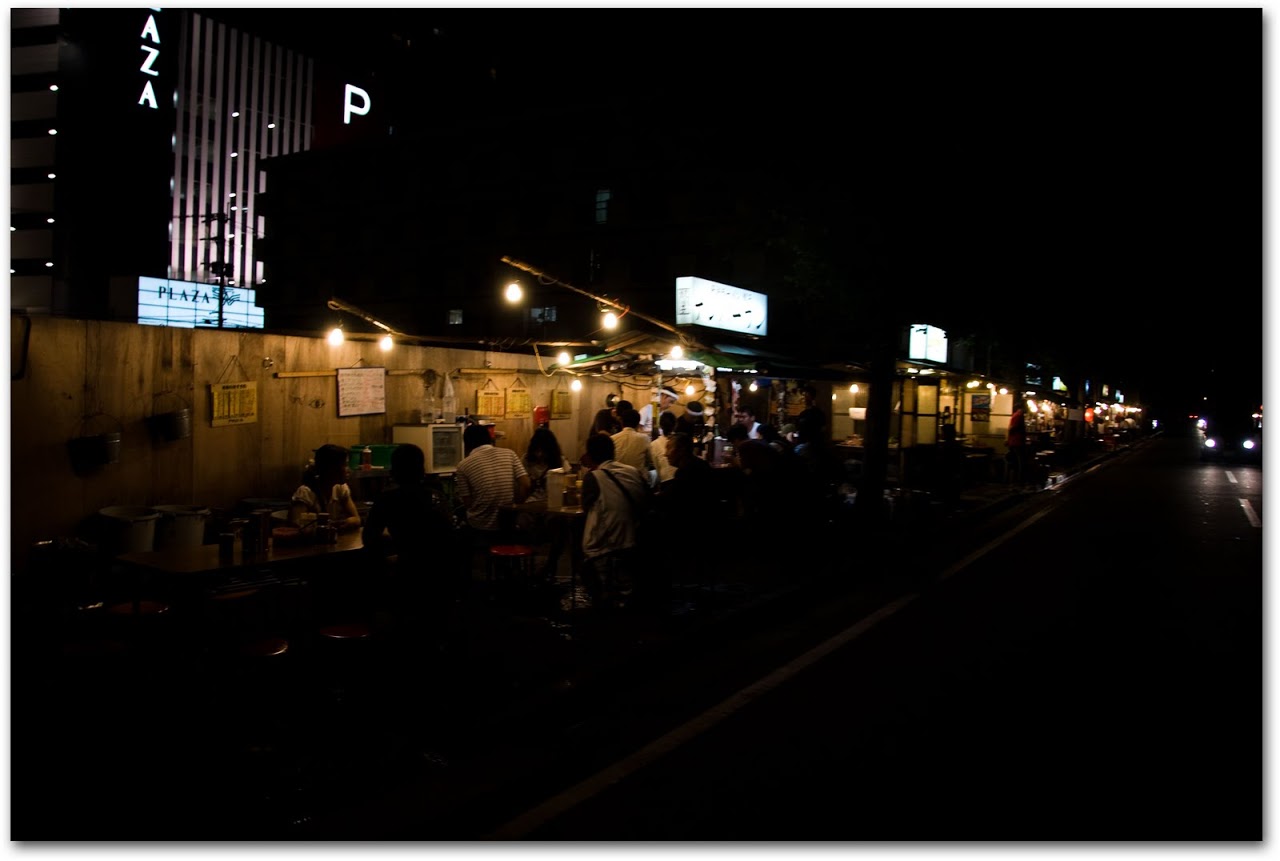
|
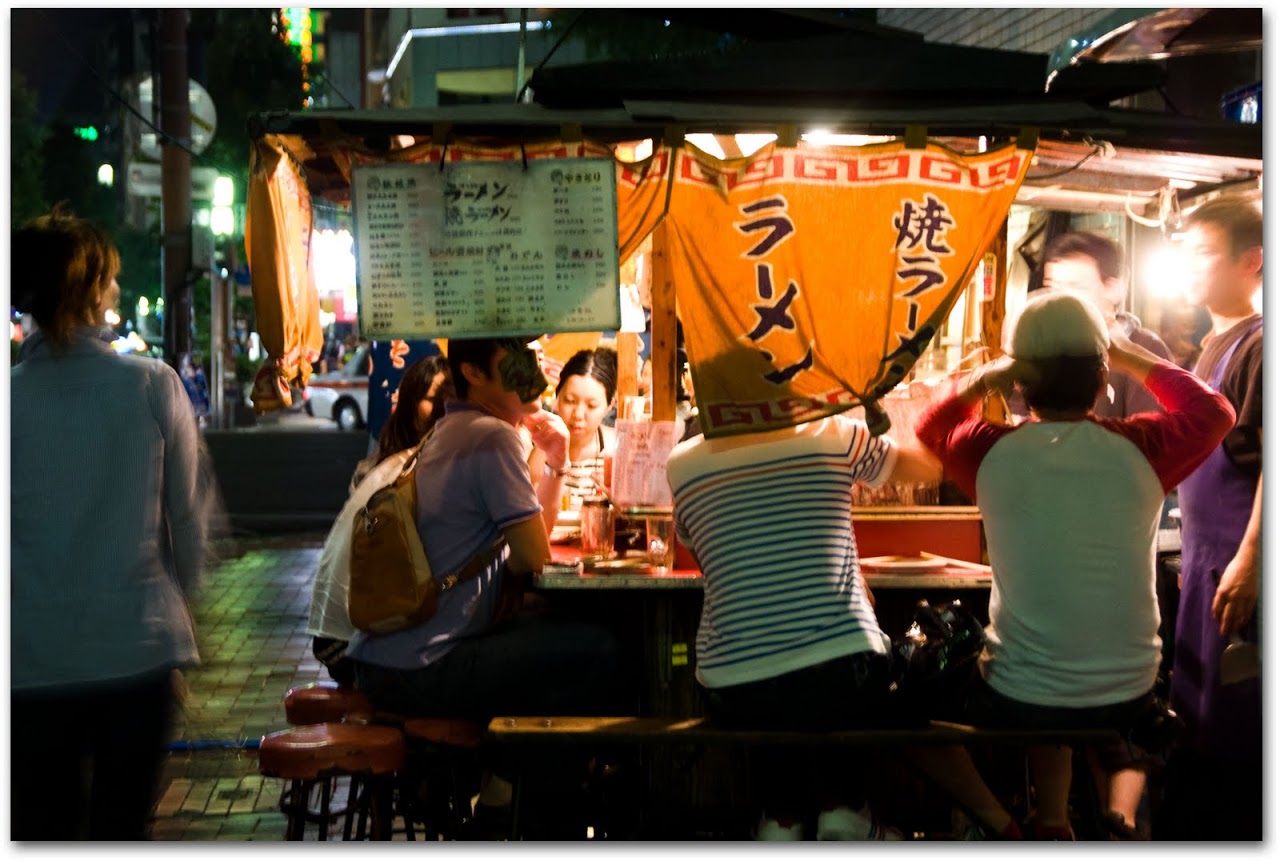
|
Fukuoka yatai
Ramen : When we think of ramen, we think of the pre-packaged styrofoam-like noodles that we popped into microwaves in college. In Fukuoka, however, ramen is an art form. At night, the streets light up with street vendors opening their yatai (stalls) to sell this famous pork-noodle soup to the masses. Fukuoka is the only city in the country that allows traditional yatai dining so, if you are in the area, don't miss it. And, you can't go wrong with a meal ranging from 800 to 1200 yen ($9 to $13 USD).
Donburi : Donburi literally means "bowl" consists of vegetables, meats, or fish simmered together and served over rice in a bowl. Many restaurants call any item served over rice, including tempura or meats or vegetables, as a type of donburi. We have tried raw egg mixed into hot rice so the steam from the rice cooks the egg. A variant of this dish is called mother donburi made with chicken and an egg over rice. Donburi set meals with a salad and a drink run around 1200 to 1400 Yen (about $13 to $15 USD).
Kare-ya (curry house) : Though most curry houses call themselves Indian, Japanese curry is an animal of its own, in the same way that Tex-Mex is not really Mexican. Japanese curry is creamier, richer, and less spicy than the Indian versions. Most are made with ground beef or ground pork. Curry House Coco is a popular fast food chain restaurant found in most cities but Japanese curry houses have set meals from 1200 to 1400 Yen (about $13 to $15 USD).
Some general tips on eating in Japan for a Westerner:
Plastic or not?
The language barrier is a problem but the Japanese have made it very easy for Westerners to order food by frequently using pictures in menus and showcasing eerily realistic plastic food. (One of our favorite games in this country is pointing at food and guessing, Plastic or Not? Super fun!) If all else fails, stand up and go point to the plastic food in the window and you'll get your meal.
As you can see, the cheap eats in Japan aren't all that cheap, compared to much of the rest of the world. Expect to pay at least $10 USD per meal per person and that is a good deal. Sodas and alcohol are over-the-top expensive. A Coca-Cola is about 400 Yen ($4 USD) at a restaurant and 150 Yen ($1.60 USD) at vending machines. Beers are around 500-600 Yen ($5 to $7 USD). Sake is usually the cheapest drink option. If you are planning a budget in Japan, I would suggest around $25 USD per person per day for food and expect that you may go over that amount if you splurge (which you should because the splurge restaurants are amazing.)
Tips are not expected (or even accepted, as far as we can tell.)
Checks will be placed at your table but you will need to pay at the counter next to the front of the restaurant. Except for in the fanciest restaurants, the waiter will not take cash at your table because a separate person handles payment at the front of the restaurant.
Wet wipes or wet towels are provided at the beginning of a meal. It is considered rude to wipe your face with the wet wipe; instead, you are supposed to wipe your hands with the wet wipe and then discreetly use the wet wipe throughout the meal, as needed. That being said, we have seen Japanese youths wiping their faces with wet wipes so this may be an older generation's rule.




